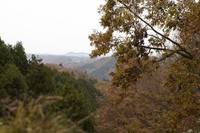Honda Hello Woods Leave Blue Skies for Our Children
TULLAMARINE, AUSTRALIA – Jan 18, 2011: Honda’s Twin Ring Motegi race track facility is surrounded by 640 hectares of forest land, managed under the ‘Hello Woods’ initiative.
Honda began tree planting in the 1960s, then in the 1970s proposed a “community forest” with the goal to create healthy forests where a variety of trees could co-exist. This led to the founding of a company-wide Community Forest Executive Committee, which in 2000 developed the Hello Woods program.
Home to thousands of plant and animal species, the rich forest land surrounding the Twin Ring Motegi race track provides an environment for people and nature to coexist. This harmonious type of forest is known as ‘satoyama’. Ural owls, northern goshawks, woodpeckers, large Japanese field mice, wild boars, Japanese rhinoceros beetles and great purple emperor butterflies are some key species in the Hello Woods ecosystem. Japanese Cherry, Konara Oak and Sawtooth Oak make up a large portion of the forest.
The Hello Forest initiative supports founder, Mr. Soichiro Honda’s philosophy of making Honda facilities fit in with the local ecosystem and community. Care for the environment and future generations is championed by Honda through voluntary targets for reduced CO2 emissions, expertly crafted i-VTEC engines that make the most out of fuel, hybrid vehicles and the development of a car that only emits water, the FCX Clarity.
“After materials are carried into the factory, nothing but products should be carried out from it,” were the words of Soichiro Honda.
Honda’s commitment to the environment runs deep, with the company recently issuing a new logo for the environmental slogan ‘blue skies for our children’. In 2006, Honda became the world’s first car manufacturer to announce voluntary global targets for the reduction for carbon dioxide emissions.
Honda’s 2011 Annual Environmental Report reveals an improvement in the energy efficiency of its production operations, cutting carbon dioxide emissions by 4 per cent for cars, 5.1 per cent for motorcycles and 9.7 per cent for power products, based on year 2000 figures.
In addition, Honda has decreased the amount of carbon dioxide emissions its products release into the atmosphere, with cars, motorcycles and power products all attaining the set target of 10 percent by 2010, based on figures from the year 2000. Honda’s new target is to reduce product-related carbon dioxide emissions by 30 percent for cars, motorcycles and power products by 2020, based on year 2000 figures.
The Honda Australia environment committee was formed in 1997 and introduced a number of initiatives to help reduce its environmental impact. One of these is energy-saving motion detectors which operate in Honda Australia’s Head Office to reduce unnecessary use of lighting.
Honda Australia Associates participate in an annual tree planting activity to coincide with World Environment Day at head office in Melbourne. Associates are also encouraged to take part in a tree planting activity at Sydenham Park Reserve, with the aim to re-vegetate the 230 hectare reserve and make it suitable for public use.



